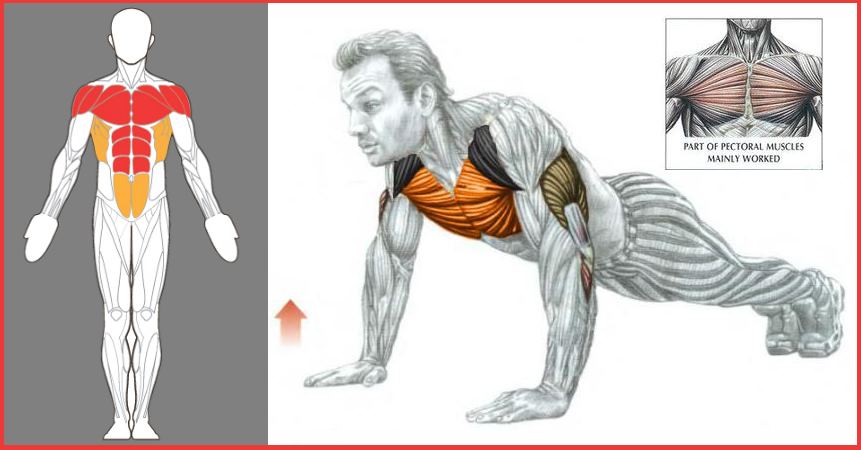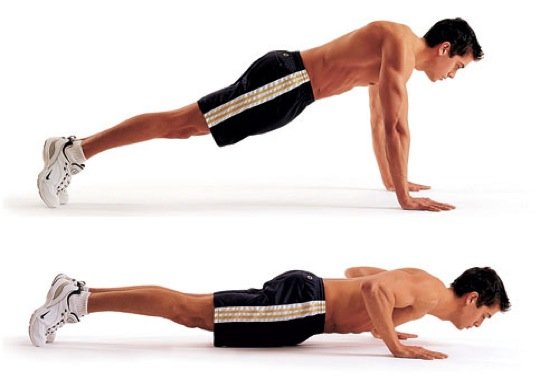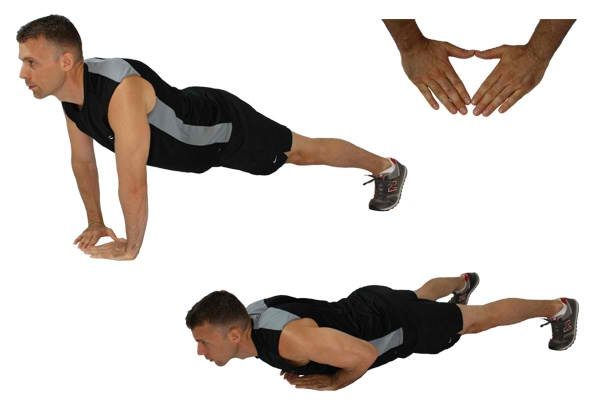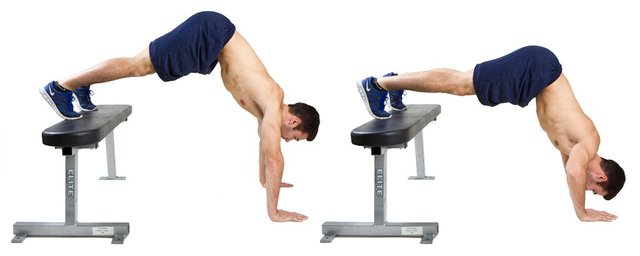
Flotations are some of the simplest, less expensive and yet most effective exercises to build a superior body and middle section, provided you do it correctly. By refining the technique, you can target different muscle groups, including not just the muscles of the chest, but also the abdomen. The purpose of the flotation program is to increase the maximum number you can make in a single set.
The form of flotation execution
Slow down the movement and use a three second contraction. Try to really feel the muscle groups you are targeting.
Take a full range of moves. Lower your body down, allowing your stern to slightly touch the floor and push up. Your arms should be straight without blocking your elbows.
Pay attention to the alignment of the elbows. The ideal angle on your part is about 45 degrees. This allows you to effectively work your chest muscles and prevent over-injury.
Keep your body rigid and straight, including your head. Pay special attention and make sure you do not let your head go; He has to be in line with his back.
Inspire on the descent; Breathe on the climb, through the nose, not through the mouth.
How To Get More From Floats
Firmly press your palms to the floor
Make sure your palms are flat on the floor and focus on pushing your wrists, not your fingers. Also, rotate the arms outward so that the joints are in a natural and comfortable position, allowing for a full range of motion.
Tighten the shoulder blades
This will help you stabilize your upper body. Firmly pushing your palms into the floor, you can start to turn it on. Then, in addition, think about keeping your arms intact, as if you hold something between them.
Tighten the posterior deltoid
This will engage your back muscles, ease the tension on your neck, and target the right muscles that you try to work on, that is, your abdomen, arms and shoulder.
Hold your aligned neck and spine
Avoid tipping the head too high up or down, as this increases the pressure on the spine. Instead of completely bending your chin or looking straight ahead, look about six centimeters in front of your fingertips and keep your eyes focused there as you push.
Involve your abdomen
While the abdominal muscles are relatively small compared to other muscles, the basic section of your body as a whole is quite large. The central region of your body is made up of the entire trunk; Everything from the pectoral (chest muscles), back and oblique to gluteus. Enabling the entire abdomen relieves stress on the underside of the back and stabilizes your hips, which helps keep your body in a firm, straight line while lifting and lowering your body.
Flotation training
For the best results, you will do 3 different flotation exercises and you will only work 3 times a week.
Start with a simple flotation

The goal is to make 3 sets of 12-15 reps. If it's hard for you, then you can start by doing a smaller number of flotations. (For example, 8,9,10). Go to the ground and then explode to the end. Just pause for 30 seconds between sets.
Exercise 2 is flotation close

The goal here is to make 3 sets of 10 reps. As in the first exercise, rest periods between sets should be 30 seconds. Again, all the way to the ground lightly and all the way back explosive.
The third exercise is a foot floating on a bench

This exercise will be heavier than the previous two, so the goal is to make 3 sets of 8 reps. You may also need more than 30 seconds of rest between sets so you can use 45 to 60 seconds of rest for this exercise. Go to the ground and then explode to the end.
Remember, warm up well before you start training and stretch after training. Try adding 1-2 repetitions per training or 3-6 repetitions each week. In about 10-15 weeks of regular training, you should be able to make 100 flotations in one set.